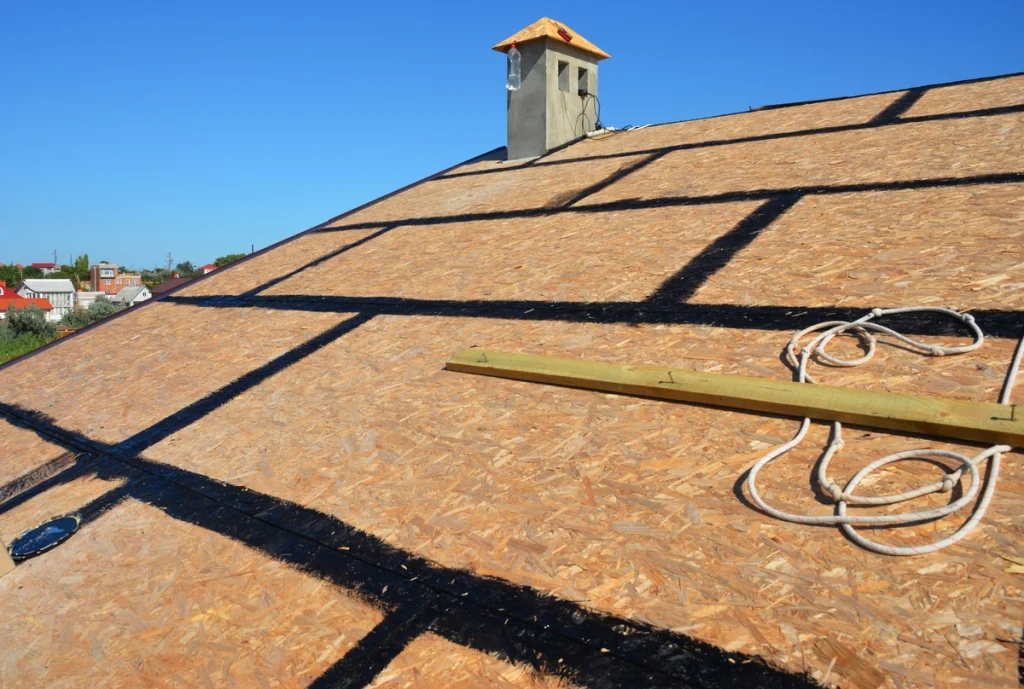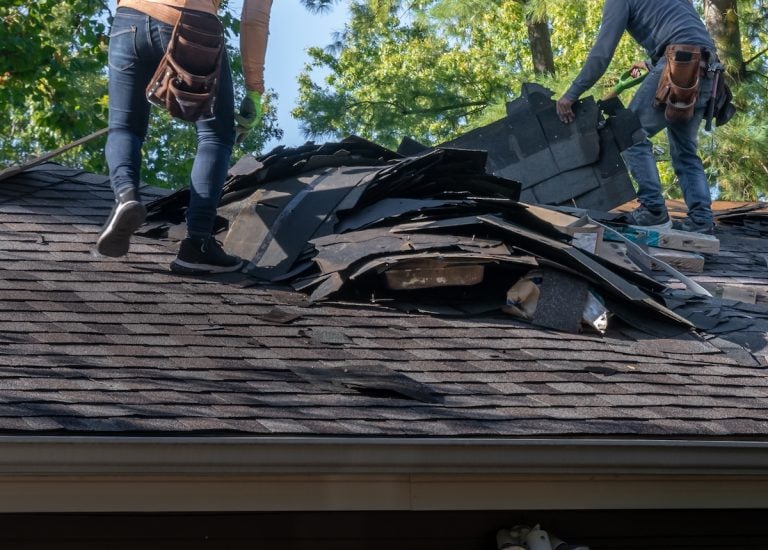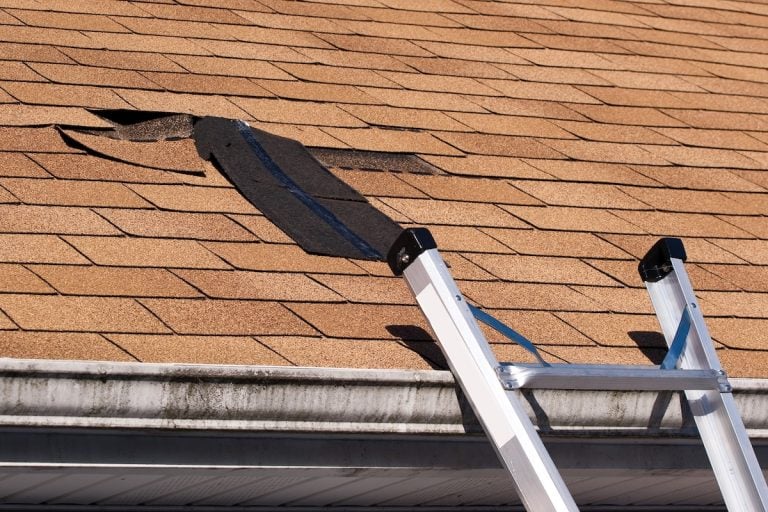One of the most critical aspects of maintaining your home’s integrity is knowing when to replace your roof and understanding the associated costs. In this guide, we’ll delve into the various factors that influence roof replacement costs, from materials to the process itself, empowering you to make informed decisions about this essential home improvement project.

Average Roof Replacement Cost in Charlotte & Raleigh (2025)
Most asphalt‑shingle roof replacements in our area land between $8,000 and $22,000 for a ~2,000‑sq‑ft roof. Metal, tile, and slate trend higher. Your final number depends on roof size/complexity, tear‑off layers, decking repairs and local permit needs. See the table above for ranges by material and roof size, plus add‑on costs for tear‑off ($1–$3/sq ft) and decking repairs ($2–$5/sq ft) when needed.
Quick Cost Snapshot (Charlotte & Raleigh, 2025)
- Asphalt shingles: $4–$11/sq ft (materials + labor) — common range for Charlotte. Example: 2,000 sq ft roof = ~$8,000–$22,000.
- Metal: $7–$29/sq ft. Example: 2,000 sq ft = ~$14,000–$58,000.
- Tile: $7–$25/sq ft. Example: 2,000 sq ft = ~$14,000–$50,000.
- Slate: ~$10–$30+/sq ft. Example: 2,000 sq ft = ~$20,000–$60,000+.
Notes:
- Typical roof size is ~1,500–2,000 sq ft (≈15–20 squares). Your actual area depends on pitch and complexity.
- Tear‑off adds ~$1–$3/sq ft; decking replacement adds ~$2–$5/sq ft when needed.
- Permits may be required depending on scope. In Mecklenburg County, building and trade permits are handled by County Code Enforcement (especially for structural changes or new electrical/plumbing/HVAC). Inside Charlotte or other municipalities, separate zoning or right‑of‑way approvals may also apply. Always verify before work begins; HOA or historic‑district rules can add extra steps.
Get an Instant Roof Quote or view your financing options here!
When to Replace Your Roof
Knowing when to replace your roof is crucial for preventing costly damage to your home. Several indicators suggest it might be time for a roof replacement:
- Age: Most roofs have a lifespan of 20-25 years, depending on the materials used and environmental factors. If your roof is nearing or surpassing this age range, it’s time to consider a replacement.
- Visible Damage: Inspect your roof regularly for signs of damage such as missing or cracked shingles, sagging areas, or granule loss. These issues can compromise your roof’s integrity and indicate the need for replacement.
- Leaks: If you notice water stains on your ceiling or find evidence of water infiltration in your attic, it’s a clear sign that your roof is failing and needs immediate attention.
- Increased Energy Bills: A poorly functioning roof can lead to air leaks, causing your heating and cooling systems to work harder and driving up energy costs.
- Curling or Buckling Shingles: Shingles that are curling at the edges or buckling in the middle are likely reaching the end of their lifespan and should be replaced to maintain your roof’s effectiveness.

Factors That Influence Roof Replacement Cost
Getting a firm price requires an on‑site inspection, but these are the variables most contractors use when building a quote.
Quick definitions:
- Square: Roofing is priced by the square (100 sq ft of roof area).
- Pitch: How steep the roof is (e.g., 6:12). Steeper = more labor, more safety gear.
1. Roof size & Geometry
Larger areas and complex shapes (hips, valleys, multiple planes) increase material and labor.
- Cost goes up with: more squares, many valleys/planes.
- Cost goes down with: simple gable shapes, fewer cut lines.
2. Pitch & Accessibility
Steeper roofs and hard‑to‑reach homes (tight lots, limited driveway access, multi‑story) slow crews and require additional safety measures.
- Up: steep pitch, limited access, tall structures.
- Down: walkable pitch, easy staging/dumpster access.
3. Material Type & Grade
Asphalt shingles are typically the entry point; metal, tile, and slate cost more upfront but last longer. Underlayments (felt vs. synthetic), ice/water shield, and premium shingles also affect price.
- Up: standing‑seam metal, tile/slate, premium shingles, high‑temp underlayment.
- Down: basic architectural/asphalt shingles.
4. Tear‑off vs. Overlay
Removing old layers adds labor and disposal, but is often required by code and for warranties. Overlays (where allowed) save on tear‑off, but add weight and may shorten lifespan.
- Up: full tear‑off, multiple existing layers.
- Down: code‑compliant single‑layer overlay.

5. Deck/Sheathing Condition
Hidden damage (rot, delamination) discovered during tear‑off requires repairs or new sheathing.
- Up: soft spots, water damage, sagging.
- Down: sound decking verified at tear‑off.
6. Penetrations & Details
Chimneys, skylights, vents, dormers, valleys, and intricate flashing details add time and materials.
- Up: many penetrations, chimney re‑flash/rebuild.
- Down: minimal penetrations, straightforward flashing.
7. Ventilation & Code Upgrades
Bringing attic ventilation up to code (ridge/soffit vents) and local requirements (ice barriers in cold zones, fire‑rated assemblies in wildfire zones) can add cost but protect warranties.
- Up: new vents, ice/water shield zones, wildfire or hurricane requirements.
- Down: compliant existing ventilation.
8. Permits, Inspections & Disposal
Most municipalities require permits; fees, inspections, and dumpster/haul‑off are part of the job cost.
Permits: Mecklenburg County Code Enforcement provides permitting, plan review, and inspections for residential work. Requirements vary by scope; “like‑kind” re‑roof scopes may be treated differently than structural changes or decking replacement. We verify and handle permits/inspections when required through Mecklenburg County’s Citizen Access system.
North Carolina licensing threshold: For projects valued at $40,000 or more, the contractor must hold a North Carolina General Contractor license (NCLBGC), effective Oct 1, 2023. If your roof project is below that amount, licensure under this statute may not be required—but experience, insurance, and workmanship standards still matter.
- Up: higher local fees, long haul distances.
- Down: bundled fees, efficient staging.
9. Local Labor & Material Market
Regional wages, demand surges (storms), and supplier pricing affect bids.
- Up: storm season, labor shortages.
- Down: off‑season scheduling, stable markets.
10. Add‑ons & Adjacent Work
Gutter replacement, fascia/soffit repairs, satellite/solar removal & re‑install (R&R), and skylight upgrades are commonly added.
- Up: R&R solar arrays, new gutters/skylights.
- Down: reuse of compatible components in good condition.
Smart Buyer Checklist
- Ask for an itemized estimate (squares, tear‑off, underlayment, flashing, vents, decking repairs per sheet, disposal, permits).
- Confirm warranties (manufacturer + workmanship) and any code upgrades included.
- Verify ventilation plan and flashing details at chimneys, valleys, and skylights.
- Clarify change‑order pricing for unexpected deck repairs (per sheet rate).
- Request proof of license, insurance, and local references.
Cost of Different Materials By Roof Size
| Material | 1,500 sq ft | 2,000 sq ft | 2,500 sq ft | Sources |
|---|---|---|---|---|
| Asphalt shingles | $6,000–$16,500 | $8,000–$22,000 | $10,000–$27,500 | Angi Charlotte; national benchmark via HomeAdvisor. |
| Metal | $10,500–$43,500 | $14,000–$58,000 | $17,500–$72,500 | Modernize. |
| Tile | $10,500–$37,500 | $14,000–$50,000 | $17,500–$62,500 | Angi. |
| Slate | $15,000–$45,000+ | $20,000–$60,000+ | $25,000–$75,000+ | This Old House. |
Note: Ranges reflect materials + labor. Add tear‑off, decking, and permit costs as applicable.
The 5 Step Roof Replacement Process
Replacing a roof is a complex undertaking that requires careful planning and execution. Here’s what you can expect during the roof replacement process:
1) Inspection and Preparation:
A professional roofing contractor will inspect your roof to assess its condition and determine the scope of the project. They’ll also obtain any necessary permits and prepare the site for work.
2) Removal of Old Roofing:
If your existing roof needs to be removed, the contractor will strip away the old shingles or other materials, inspecting the underlying structure for any damage that needs repair.
3) Installation of Underlayment and Flashing:
The contractor will then install a waterproof underlayment and flashing around roof penetrations to provide added protection against moisture infiltration.
4) Installation of New Roofing Materials:
Once the preparatory work is complete, the contractor will begin installing the new roofing materials, starting from the bottom and working their way up to the ridge.
5) Cleanup and Inspection:
After the new roof is installed, the contractor will clean up the job site, removing debris and ensuring that everything is in order. A final inspection will be conducted to ensure the roof meets quality standards.
How to Pay for Your Roof Replacement
Replacing a roof is a significant investment, but there are several financing options available to help homeowners manage the cost:
- Cash: If you have the funds available, paying for your roof replacement upfront with cash is the most straightforward option, as it eliminates the need for interest payments or financing fees.
- Home Equity Loans or Lines of Credit: Borrowing against the equity in your home can provide the funds needed for a roof replacement at a relatively low interest rate, making it an attractive option for many homeowners.
- Roofing Financing Programs: Some roofing contractors offer financing programs that allow homeowners to spread the cost of their roof replacement over time, often with competitive interest rates and flexible repayment terms.
- Insurance Coverage: In some cases, roof replacement may be covered by your homeowners insurance policy if the damage is due to a covered peril such as wind, hail, or fire. Be sure to check your policy and file a claim if applicable.
Ready for a Precise Number?
Roof replacement is a significant investment, but it’s essential for protecting your home and ensuring its longevity. By understanding the factors that influence roof replacement costs and exploring financing options, you can make informed decisions about this important home improvement project.
Whether you’re replacing an aging roof or addressing damage from severe weather, investing in a new roof will provide peace of mind and enhance the value of your home for years to come. Contact Roof Medic today to get the help you deserve!
FAQs
How do I estimate my roof size quickly?
A fast ballpark is to multiply your home’s footprint by 1.3–1.6 (to account for pitch and overhangs). Divide by 100 to get “squares.” We’ll confirm precise measurements during your inspection.
Are overlays allowed?
In some cases, a single overlay may be code‑permissible, but we typically recommend a full tear‑off to expose hidden issues, ensure proper flashing, and keep warranties clean.
Will a new roof improve resale value?
A sound, warrantied roof is a strong selling point. National “Cost vs. Value” data tracks project ROI by metro each year; while exact returns vary, roofs consistently remain a high‑confidence exterior project for buyers.




